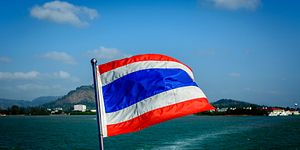Last week, Thailand launched another one of its planned offshore patrol vessels. The development highlighted the current status of this aspect of Thailand’s naval capabilities as the Southeast Asian state looks to boost its ability to address a wide array of challenges amid significant constraints.
As I have noted before in these pages, as part of its ongoing efforts to address a series of maritime challenges in surrounding waters in the Andaman Sea, the Gulf of Thailand, and beyond, Thailand has been looking to boost its naval capabilities, and one of the areas it has been looking to develop is offshore patrol vessels (OPVs). Officials have previously disclosed the need for several more of these vessels even as challenges remain with respect to boosting the country’s overall defense budget.
Among the partnerships of note has been an agreement between British defense firm BAE Systems and Thai shipbuilder Bangkok Dock to facilitate the building of 90-meter OPVs that could be employed for various functions including the management of exclusive economic zones and the provision of disaster relief. The RTN had accepted the first OPV, HTMS Krabi, back in 2013, and a contract had been inked for the building of a second one in 2016 as well.
Last week, this aspect of Thailand’s ongoing defense modernization was in the headlines with the launch of the second of these OPVs. On August 2, the Royal Thai Navy (RTN) held a ceremonial launch ceremony for the second of its Krabi-class missile-capable OPVs, which will be known as the HTMS Prachuap Khiri Khan once it is commissioned.
Per a statement by the RTN, the ship underwent its ceremonial launch at the Mahidol Adulyadej Naval Dockyard in Sattahip, Chonburi. The move marked yet another milestone in the development of the HTMS Prachuap Khiri Khan, which was laid down in June 2017, took to the water in August 2018, and underwent a name change from the earlier HTMS Trang in early 2019 in memory of the late King Bhumibol Adulyadej who had passed away in 2016.
While the launch of the vessel constitutes yet another advance in its development, there is still some way to go before it is commissioned and actually utilized by Thailand for a range of functions including routine patrols, border control, and natural resource protection. Per details previously disclosed by the RTN, the HTMS Prachuap Khiri Khan would have a length of around 90.5 meters, a top speed of 25 knots, a range of 3,5000 nautical miles, and is equipped with combat, navigation, and communications equipment provided by Thales, with an estimated budget cost of 5.5 billion baht.































